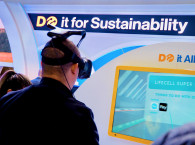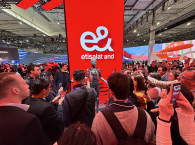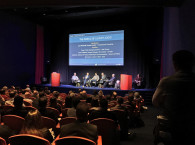Probably the most remarkable fact was that neither of the trade shows was much affected with this unusual clash, with both events displaying very strong attendance and exhibitor statistics. Not even the political instability that's been affecting the Catalonia region or the cold weather from Siberia that covered most of Europe with rain and snow, deterred the enthusiasm and excitement that was noticeable in the always vibrant city of Barcelona during MWC.
Increasingly, the dynamics of MWC are turning attention away from the iPhone-clones that mobile brands continue to throw at the market, and more toward the world of connected devices that make smart cities, smart homes, wearables, and IoT possible. Yes, the MWC still relies on the massive amounts of business that occurs there every year among telecom infrastructure providers and network operators, but the norm is more and more consumer electronics, autonomous cars, cloud solutions, and software developers pitching their latest ideas on social-engineered apps - almost like we see happening at CES.
Of course, the greatest strength of the Barcelona show still resides in the vibrant underlying technology that powers the increasingly connected society, with everything that it entails, including audio technologies, voice interface solutions, and smart and connected home and personal devices that are currently powering the consumer electronics industry. That's why much of MWC’s real action happens in closed meeting spaces and demonstration areas outside the general visitor's access, where new technologies and development platforms are shown and pitched, and engineering meetings define the products for the next two years.
According to the GSMA, MWC 2018 attracted 7,700 CEOs (up from 6,100 in 2017), there were 181 Ministerial Delegations in attendance, and preliminary figures show that more than 107,000 visitors from 205 countries and territories attended the 2018 MWC. That's marginally less than the 2017 attendance (108,000), but still impressive given the fact that embedded world, with more than 30,000 visitors was happening at the same time, and that the storms closed many key airports in Europe – there was snow in Barcelona! After all, it was only in 2016 that MWC surpassed the 100,000 mark for the first time.

Even the boiling political disputes in Catalonia where temporarily put aside to welcome another edition of MWC, which independent economic analysis indicates contributed with approximately 471 million Euros ($580 million USD) and more than 13,000 part-time jobs to the local economy.
“We had another highly successful Mobile World Congress, across so many fronts. We are gratified with the number of senior-level attendees, particularly the number of CEOs, as well as the continued strong attendance of government ministers and regulators. However, we are not focused on necessarily having the biggest event – we continually strive to convene the right audience and deliver a high-quality experience across all aspects of the event, the conference, the exhibition, and the many other programs and events at Mobile World Congress," said John Hoffman, CEO, GSMA. "I’m only sorry that we could not arrange the typical beautiful Barcelona weather for this year’s event," he added.
More than 2,400 companies showcased cutting-edge products and services across 120,000 net square meters of exhibition and hospitality space at Fira Gran Via, compared with more than 2,300 in 2017. More than 3,500 international media and industry analysts attended the event to report on the many significant industry announcements made there - even if the majority travels to the show at the expense of the big mobile brands. And no matter how hard the big Asian brands try to push new Android-phone models, wherever we look, all we see are iPhones in use, and I had never seen so many white AirPods hanging in people's ears.

Big topics for MWC 2018 were the discussions about the roll-off of 5G mobile networks, Artificial Intelligence (AI), IoT, content and media, and... blockchain. As it was at CES 2018, cryptocurrencies were prevalent, even in discussions of policy and regulation in the sector, but blockchain was also a hot technology topic among operators and software companies. Those topics were common on keynote sessions featuring leaders from China Mobile, CNN, Ericsson, the European Commission, GE, HTC, McAfee, NTT DOCOMO, Red Hat, SoftBank, Tata Communications, the United Nations, the United States Federal Communications Commission, World Bank Group, and many more.
Clearly visible on the show floor was the fact that smartphones were fewer, and technologies and services shaping the future of mobile prevailed. I also noticed fewer smart watches (copying and competing with Apple, as always, proves highly destructive...) and more home, automotive, and health solutions. On the telecom side, the discussion around 5G implementations seemed to be much more focused on key applications such as connected cars and the services that will clearly benefit from the expanded bandwidth and robust coverage (e.g., media distribution). With 4K OTT services growing globally, telecom companies want to make sure they continue to control the physical gateways, including the end devices, which can very well be 5G smartphones that can also connect wirelessly to any home display.

The GSMA Innovation City featured leading-edge demonstrations of 5G technologies powering virtual reality/augmented reality, robotics, cognitive computing, artificial intelligence, and media distribution – a recurring topic at all major booths. So, if you wrongly ask… “What has 5G to do with our audio industry?” suffice it to say that if we hope to have high-resolution or uncompressed music streaming services one of these days, it will most probably only happen when we have those 5G networks in place.
But clearly, for now, selling points for 5G are much more ambitious and futuristic. As market research firm Strategy Analytics notes, 5G use cases and applications will be propelled by Artificial Intelligence (AI), Machine Learning (ML), and Security, and are needed to "make well-informed decisions with little or no human intervention, to improve the speed and accuracy of big data analysis.” Real-time Location Systems (RTLS) and the Smart City "will also be the mainstays of IoT content," they state.
Another recurring statement regarding 5G, came from Broadband Forum CEO, Robin Mersh, who stated that the 28 billion devices that are expected to be connected to 5G will never achieve full functionality through wireless networks alone and must be backed by fixed networks in order to achieve the required scale. "To deliver on the promise of 5G and meet consumer expectations, convergence between fixed and mobile networks is a must," said Mersh. More information here: www.broadband-forum.org/5g.

On the technology front, things that caught our attention included lots of new uses for voice recognition, including things that make much more sense than fridges. One of those was on the MyLiFi, "the lamp you can talk to!" from French company Oledcomm. First unveiled at CES 2018, MyLiFi, is an LED lamp that offers wireless Internet at the speed of light – that is, using LiFi, the revolutionary technology that allows mobile devices (and other connected objects) to connect to each other by using LED lights. LiFi offers ultra-fast, secure, and radio wave-free Internet connectivity. Now, Oledcomm was showing the MyLiFi lamp with voice recognition, in English and French, to allow users to control and personalize the connection via Google Assistant, including defining a waking schedule, the color temperature (from cool white to hot orange), and the light intensity of the lamp. Very cool (or warm!)
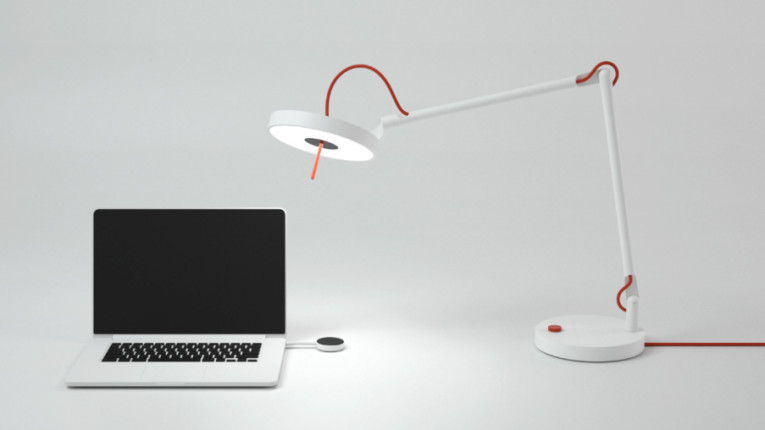
Theoretically, Li-Fi connectivity is able to reach 224 gigabits per second in direct view and could still achieve 70 megabits per second when reflected off a surface (source Wikipedia). Applications in smart home, and for wirelessly connecting audio devices in the same room are obvious candidates. Li-Fi signals cannot pass through walls, but many of the companies already working with the technology are combining systems with standard Wi-Fi, since Li-Fi uses standard IEEE 802.11 protocols.
Another very cool product and technology that caught our attention comes from Swedish fuel cell company myFC. In general, anything that promises to improve our energy (in)dependence is worth examining. Usually those demonstrations show technologies and concepts that will take years to come to fruition. In this case, myFC was showing a working prototype at MWC 2018. The myFC JAQ Hybrid is the world’s smallest fuel cell charger for smartphones and tablets and, as they say, "there is literally no other product like it in the world.”
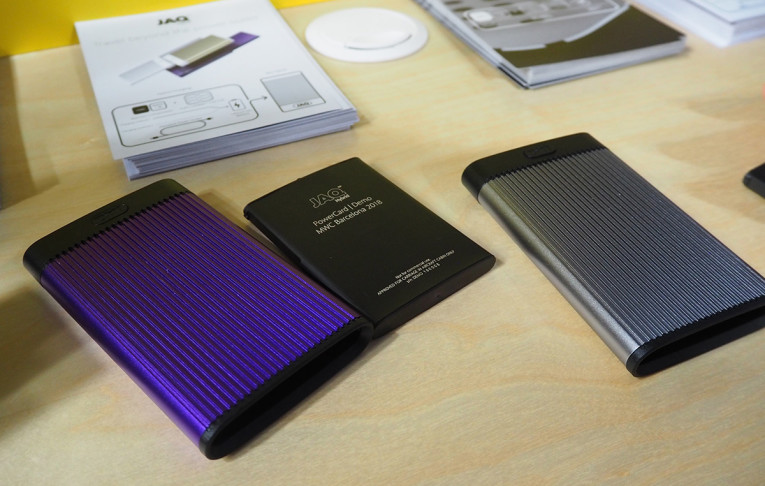
The myFC JAQ Hybrid is a powerbank that combines a hydrogen fuel cell with a 10.5 W (2.1 A at 5 V) charger, able to both produce and store energy. Promising infinite power in our pocket, the (1250 mAh) battery can be charged using myFC’s patented, green fuel, based on salt and water, as well as through a regular power outlet. The myFC PowerCard provides a USB-compliant output, able to power any USB 5 V device and supports one complete smartphone charge in a very thin and light device, already CE, IEC, CCC, KCC, and FCC certified, and designed to comply with international air safety regulations.
We will mention a third example of cutting-edge demonstrations seen at MWC 2018, not exactly yet as a product, but in the shape of a very interesting technology coming from Israeli company Sonarax (former Prontoly). Basically, Sonarax has been perfecting the use of ultra-sound to create a new kind of signal-processing and communication solution that can be used to pair and authenticate devices and services, used in combination with other network and connectivity technologies, like Bluetooth.
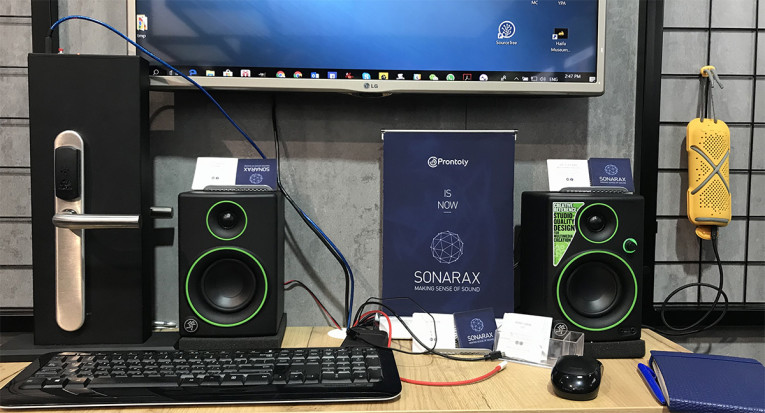
Using only a microphone and speaker, Sonarax is able to generate an Ultrasonic Token for proximity-based authentication, pair and control devices, and provide a simple and straightforward method for data transfer between devices, with full control over transmission range and with a high detection rate. The company provides a full SDK for any operating system, allowing manufacturers to implement all kinds of applications, including connections to cloud, Point of Sale (POS), and media devices, or building indoor positioning systems, based on a simple and cost-effective sonic interaction. The technology works amazingly well with any device equipped with a speaker and microphone (e.g., a smartphone), and it could certainly be used to great advantage in home entertainment and all sorts of media applications. We think this could be an ideal solution to allow identification and pairing of multiple users with smart speakers.
Of course, during the many demonstrations and presentations we attended at MWC 2018, the topic of voice, smart speakers, truly wireless stereo, and several audio-related topics, such as digital signal processing for audio optimization in portable devices, acoustic compensation, and personalization, was recurrent. New trends to note are all sorts of "dockable" Bluetooth speakers – enhancing the sound of smartphones (basically a speaker that docks to a smartphone cover and can be detached at any moment). Another important trend that the industry is quickly moving forward with is QI wireless charging technology - the integration of charging surfaces in all sorts of devices. Yes, including speakers. Basically, anything that connects to a power outlet will benefit from also offering a charging surface for one of multiple mobile devices. And with the number of battery-dependent gadgets in our lives, that will be a good selling argument for some brands.
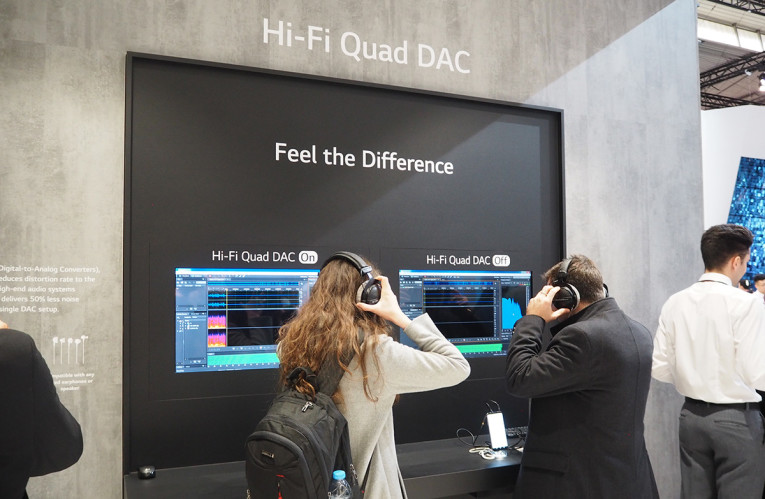
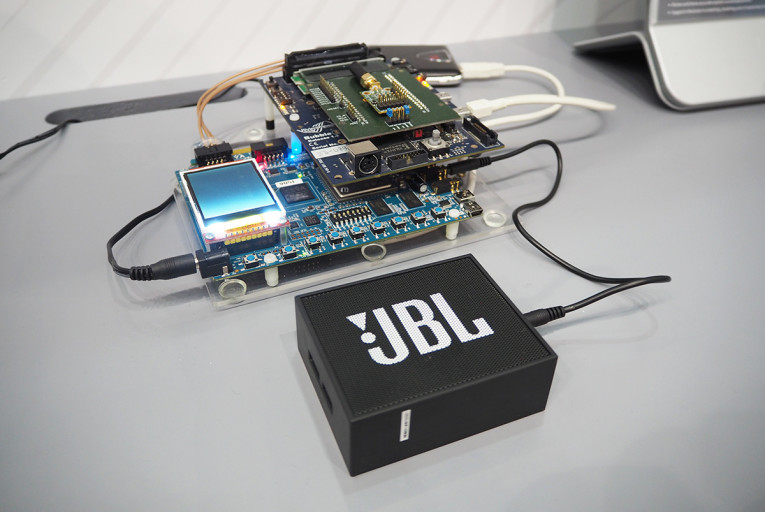
As a final teaser for the many things worth checking out in more detail, I will highlight some of the 2018 Global Mobile Awards (GLOMO Awards) winners. Skipping the iPhone-clones and the telecom-specific solutions, mostly 5G related, I need to mention the fact that Apple was awarded the Best Smartphone 2017 with its iPhone X, and for Disruptive Device Innovation with the iPhone X TrueDepth Camera.
For the consumer space, the GLOMO Awards recognized the Dojo by BullGuard as the "Best Connected Consumer Device." The Dojo is a consumer-friendly tool to secure home networks and devices, monitoring the home network 24/7 against cyber threats. An interesting product and service.
The Best Wearable Mobile Technology recognized Bragi for The Dash Pro, which the judges said is “A good quality, innovative product from the company that pioneered the hearables product category. It is a significant enhancement to the original and also brings some meaningful differentiation to the market.” And Bragi has so much more to say about the technology that they built on The Dash Pro. We will be discussing more about it in The Audio Voice, very soon.
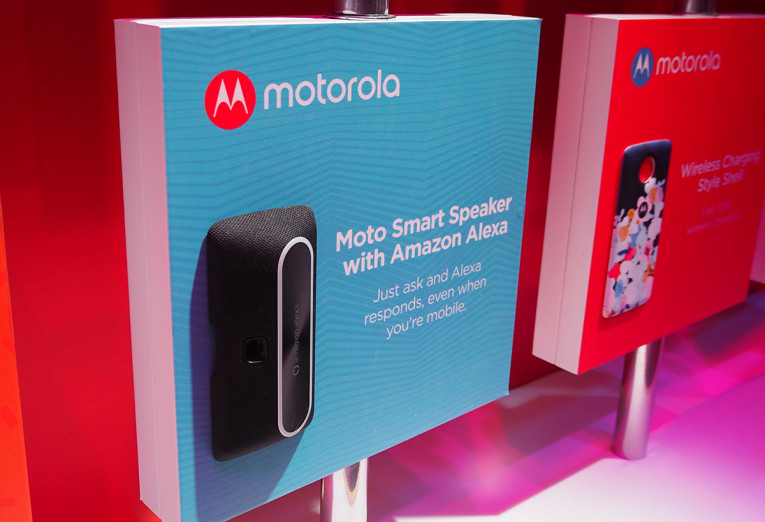
Mobile World Congress 2019 will be held February 25-28, 2019, again in Barcelona. Mobile World Congress Americas takes place September 12-14, 2018, at the Los Angeles Convention Center (LACC).





